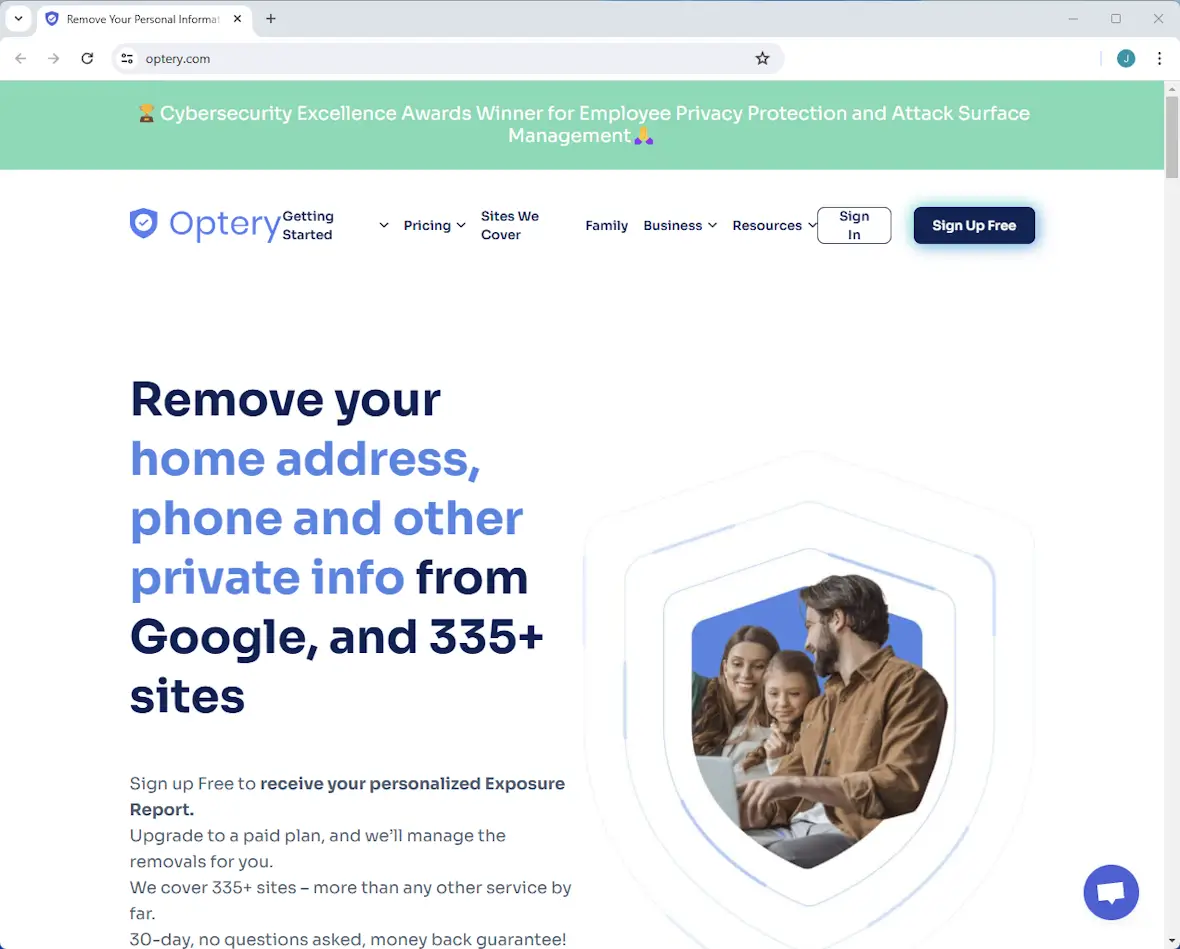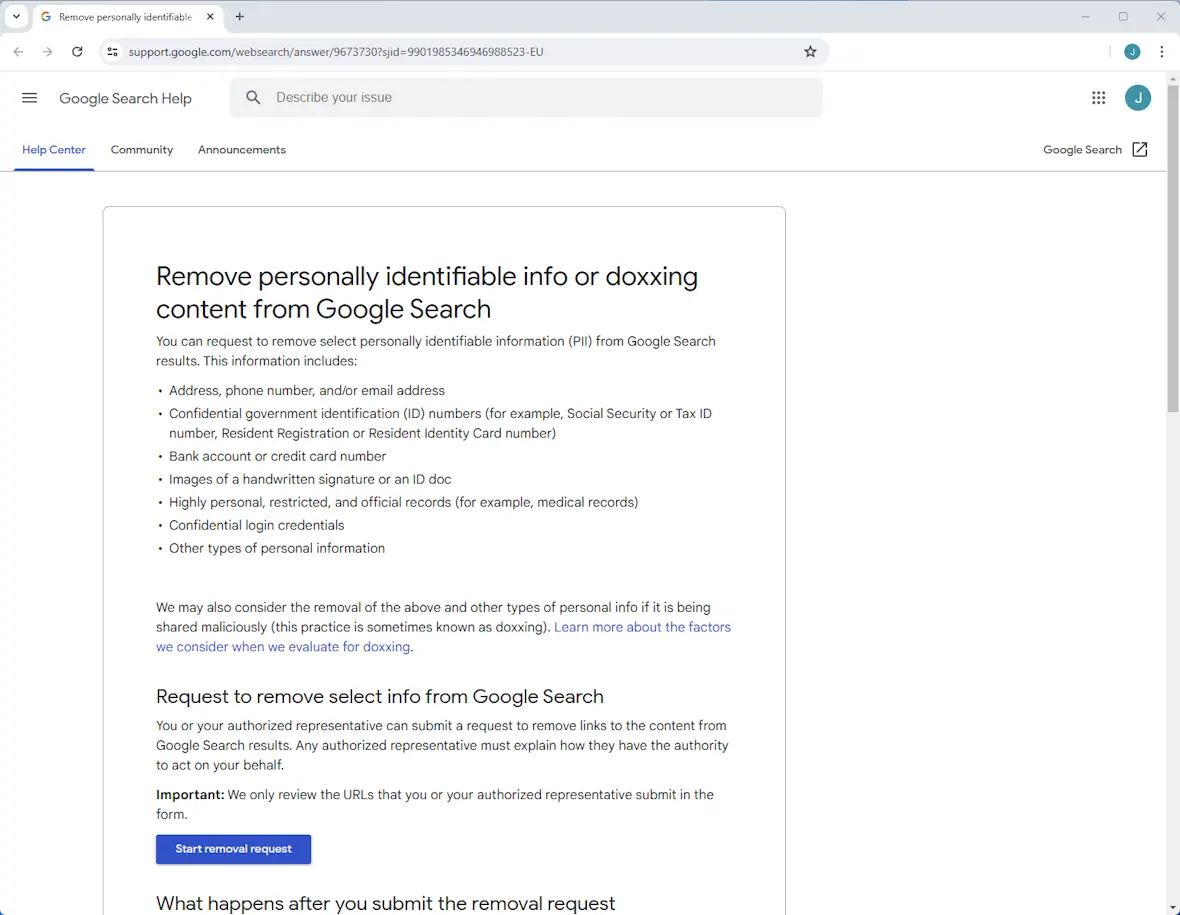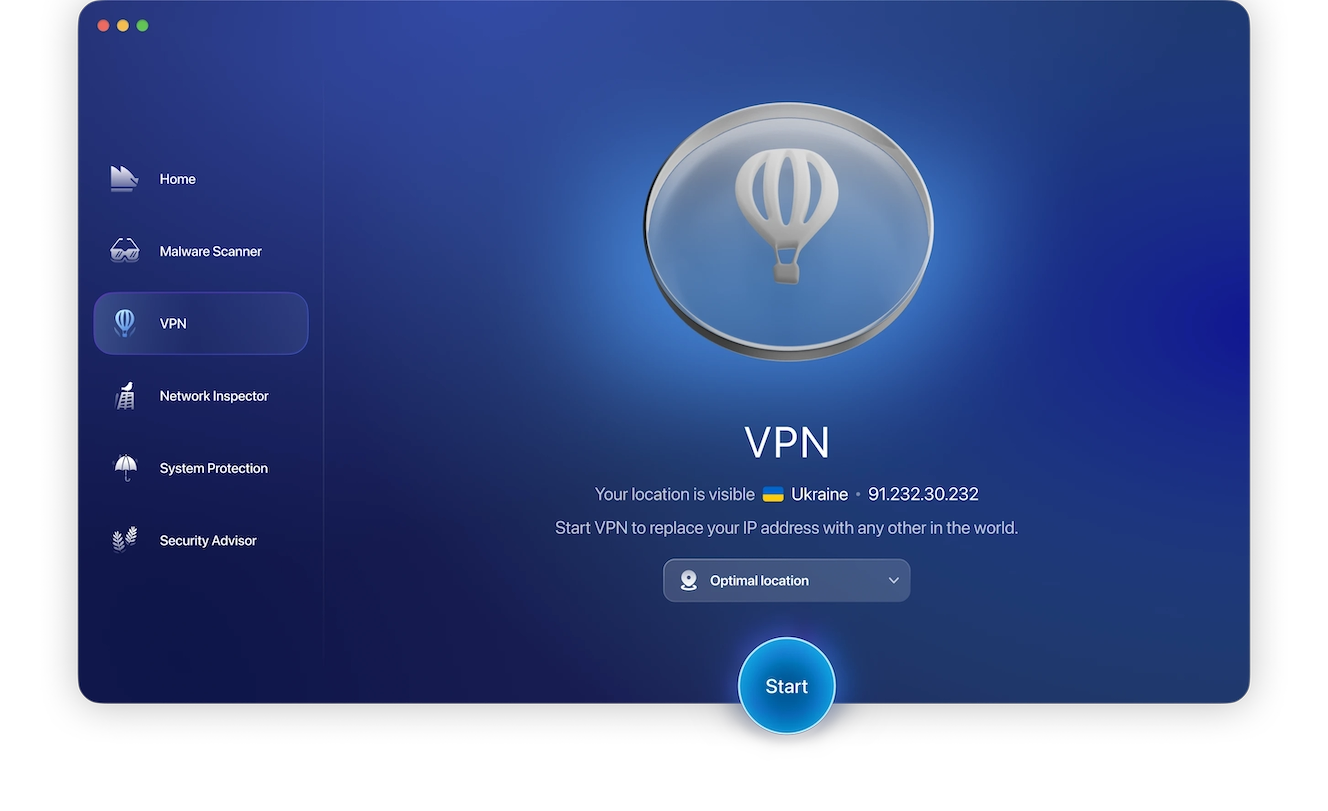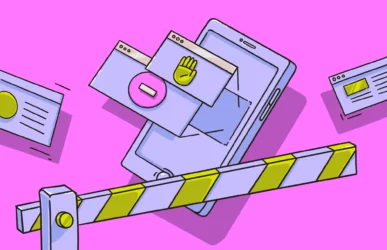Everyone who’s been online has a digital footprint. In fact, anyone who has used the internet even once has some kind of digital footprint. The question is how big that footprint is and how much personal information it makes available to prying eyes.
If you have a large footprint, however, don’t worry. There are steps you can take to reduce it. If you want to know what a digital footprint is, whether you have one, and what to do about it, read on.
What is a digital footprint?
A digital footprint is the collection of information about someone that exists online. Just like walking in leaves footprints, what you do online creates a trail. And if presented with enough of your personal information from these traces, someone could learn a lot about you, including what you do, what you’re like, where you live, what you buy, what entertainment you enjoy, who you speak to, where you travel, and more.
Unfortunately, digital footprints tend to stick around. Much of the footprinted data you leave behind when you’re online isn’t deleted but is stored by big data companies. Some of it will be publicly available, but some of it will only be available to the data company that stores it. Sometimes, some of this information is sold to third parties who use it to sell targeted products or services to you.
Want to keep a low profile?
What are some examples of a digital footprint?
Considering the definition of digital footprint above, there are nearly endless ways in which a person’s digital footprint can be formed. Below are the most common digital footprint examples. These are the services you might use and activities you might perform online that add to your digital footprint:
- Social media: Using social media can add all kinds of things to your digital footprint, such as photos, public posts, job history, location, who your friends are, what groups and activities you’re interested in, and so on.
- Online shopping: Everything you buy online can form part of it. This includes in-app purchases as well as big physical products that you order online. All this can form part of a picture of your online identity.
- Video streaming: What you watch can form part of your digital footprint, too. If you use YouTube, Netflix, Amazon Prime, or any other video streaming service, you’re leaving behind information about what you search for and watch.
- News and articles: Part of your footprint might be formed from information about the kinds of news stories, blog posts, and articles you read online. These can tell someone a lot about what kinds of things you’re interested in. This information is usually tracked via cookies.
- Online forums: Any information you submit to online forums, whether it’s posts, comments, usernames, or DMs, can form part of your footprint. This is true of sites like Reddit, as well as support forums.
Understanding the significance of a digital footprint
Your digital footprint is just as important as your real-life personal information — because much of it is, in fact, real-life personal information that’s stored online.
Your publicly available information, such as social media and forum posts, is more immediately significant than other digital footprint data because anyone can see and potentially exploit it. An employer, for instance, could take action against you if they see a social media post that paints you in a bad light. More worryingly, a social engineering hacker could use your digital footprint to find an answer to one of your security questions for a website account or maybe even commit identity theft.
Private information can form part of your digital footprint, too. For instance, information about your online purchases or private forum messages might not be discoverable through a public Google search but could be stored on the website’s servers. This is significant for a couple of reasons.
First, this data could be sold to third parties to influence you into buying their products, using their services, or making different decisions. It might, for instance, form part of a nudge marketing strategy.
Second, an organization could leak your private information. Or a hacker or malicious employee could gain unauthorized access to this information and exploit it to access your accounts, steal your identity, or blackmail you.
Components of a digital footprint
If you’ve been using the internet for a while, it’s likely that some or all of the following information about you — stemming from your digital footprint activity — will be stored online.
Social media posts
Anything you’ve posted on social media sites, such as Facebook, can form part of your digital footprint, especially if you’ve kept your profiles public and posted to them often.
Online reviews
Any reviews you’ve given for products or services, such as on Amazon, can form part of your online footprint. This information is often publicly viewable and can tell others what kinds of products and services you like and don’t like.
Online purchases
Information about particular products or purchases you’ve made online can form part of your footprint, too. These could include physical products, online subscriptions, or even in-app purchases.
Online text conversations
Your digital footprint can include any conversations you’ve had with others through online chat rooms, forums, message boards, and so on. These might not be publicly viewable, but they can still be stored online.
IP addresses
Your digital footprint will probably include the identifying address for each device you’ve used to connect to the internet. It’s likely that every website you visit tracks this kind of metadata.
Location information
A digital footprint will likely also include information about where you’re geographically located when you use the internet. This is linked to your IP address.
Email addresses
Any email addresses you’ve registered or used online can form part of your digital footprint, including email addresses you no longer use or have deleted. Some of these will be publicly viewable (for example, if you’ve used them to register for public-facing accounts on smaller websites).
Usernames
Your digital footprint includes any usernames you’ve created and used for online services or platforms. Sometimes, this will be your email address. Other times, it will be an alias you’ve created.
Passwords
Your digital footprint also includes passwords you’ve created and used for online services or platforms. These almost certainly won’t be publicly viewable unless one of the services or platforms you use is breached and has had its users’ information leaked.
Search history
Information about many of the things you’ve searched for, whether on a search engine like Google or internally on a website, such as a social media site or video streaming site, will be a part of your digital footprint.
How does a digital footprint work?
Your digital footprint isn’t all kept in one location, and it’s not all publicly viewable. The phrase “digital footprint” is just a convenient way to refer to this collection of disparate information that, in theory, someone could put together to form a picture of you, provided they had access to it all.
Yes, a digital footprint is real. It’s not a single thing. Rather, it refers to all the information about you that exists online, whether publicly viewable or kept private on company data servers.
There’s no guarantee that your digital footprint will last forever because the companies that store your information might delete it. However, because important data isn’t usually deleted, most of the information in your digital footprint will last for your lifetime.
Delete as much public-facing information about you as possible, close down accounts, and request that companies delete your data. However, for the most part, the best strategy is to limit the information you put online in the first place.
Any online activity can add to or create your digital footprint because most things you do online leave traces.
One digital footprint is stored across different places, such as in online servers, ISP records, and in your browser cookies.
What are the types of digital footprints?
While we can refer to a person’s entire digital footprint, we can also split this footprint up into smaller ones: active, passive, private, and commercial. Some of these overlap.
Active digital footprints
An active digital footprint is one composed of all the information you’ve deliberately shared about yourself, such as what you enter on public-facing social media pages.
Passive digital footprints
A passive digital footprint is one composed of all the information you haven’t deliberately shared about yourself but which you leave behind while using the internet. This includes things such as your IP address, location, actions you take on a website, such as visits to particular sub-pages, and so on.
Private digital footprints
A private digital footprint is one composed of all the online information about you that’s only accessible to some people or companies. For example, private messages you’ve sent on online messenger apps or forums form a private digital footprint for those who can see them.
Commercial digital footprints
A commercial digital footprint is one composed of all the online information about you that businesses collect to use for commercial purposes. For instance, a company might track your demographic information to better target advertisements for you.
How to check your digital footprint
You’ve got to find your digital footprint before you can delete its various elements. To discover what information about you is stored online, do the following.
1. Google your name, username, and email address
The quickest and easiest way to check your digital footprint is to Google yourself. First, Google your name and see what personal information comes up in the first few results pages. Then, do the same for any usernames you use for different online accounts, as well as any of your email addresses.
You should repeat this with different search engines, such as Bing and DuckDuckGo, because different platforms might show different results.
2. Check for account breaches and leaks
If you’re unlucky, your digital footprint might include some leaked login information or other personal information that’s come from a website breach. To check if your email address has been the victim of a breach, go to https://haveibeenpwned.com/.
3. Use a digital footprint exposure website
Some websites will check your digital footprint for you. Most websites will charge you and will include a personal information removal service as part of the subscription. Some, however, such as Optery, will give you a “personalized Exposure Report” for free. This Exposure Report will show you your digital footprint information, and you can then decide whether you want to pay to have them attempt to scrub this information from the internet.

How to delete your digital footprint
If you want to get rid of your digital footprint, the first thing you should know is that you won’t be able to delete your entire footprint, because some data can’t be removed completely. However, there are several steps you can take to delete some of your digital trace. (Also note that some paid services, such as Optery, will attempt to delete much of your digital footprint for you for a fee.)
1. Note the information that appears first on Google
First, note what information appears on the first few pages of Google when you search for your name, username, or email address, as well as which websites host this info. This will give you some idea of which accounts and websites you can direct your digital footprint scrubbing toward.
2. Delete old or unnecessary accounts
One of the first things you should do is delete any accounts that you don’t use or don’t need anymore. This is a quick way to reduce your digital footprint and keep your publicly accessible information to a minimum. You can even falsify your information on these accounts before deletion. That way, if any information remains, it might not be easily traced back to you.
3. Unsubscribe from unnecessary services and mailing lists
If you’re subscribed to a service or platform you don’t need to use anymore, or perhaps one you forgot about, unsubscribe from it. Mailing lists (newsletters), in particular, can contribute to many people’s digital footprints without them realizing it. Most mailing list emails should give you the option to unsubscribe in small text at the bottom.
4. Clear your cookies
Many sites can track you and collect your personal information by storing it in cookies, which are little pieces of data that get stored on your device and are used to help websites recognize you when you revisit them. To keep the amount of information they can collect to a minimum, you should clear your cookies regularly. You can clear your cookies manually on an iPhone, Mac, or Windows PC, or you can use a handy tool like CleanMyMac.
5. Request to remove information from Google
If Google presents users who search for you with information that you don’t want them to see, Google might be able to scrub it from their results pages for you. Go to their Personal Content and Product Policies and Removal Requirements page, then select the relevant section. For instance, if the information personally identifies you, you can submit a removal request.

How to minimize your digital footprint and protect your privacy
The best thing to do about your digital footprint is to prevent it from being built up. If you’re using the internet, you’re going to leave some kind of footprint, but there are ways to reduce the size of this trace and keep the information about you online to a minimum. Here are some of the best ways to protect your privacy and keep your digital footprint small.
1. Monitor your digital footprint
The first thing you should do is keep up-to-date on what information about you is online. Look up your name, email addresses, and usernames regularly on Google and other search engines. This way, you’ll have a better idea of which sites and accounts to try to scrub your information from.
2. Use strict privacy settings
Most websites, including social media, allow you to use strict privacy settings. Make it a habit to check the settings page whenever you make an account, and ensure that all privacy-securing settings are enabled. For example, you can usually set social media profiles to private and disable the ability to find your account via search.
3. Don’t create new accounts
This might seem simple, but it is often hard to follow in practice: If you don’t need an account, don’t create it. Every new account you create broadens your digital footprint, so it’s best not to make them in the first place if you can help it.
4. Don’t share anything you don’t have to
Similarly, it’s best not to share any personal information online in the first place if you can help it. Sometimes, information that we assume won’t be troublesome for our digital footprint can become so down the line. For example, a website data breach could leak information you thought was private, or an employer could find traces of some social media activity that you thought was innocuous but that they find an issue with.
5. Use a virtual private network (VPN)
A virtual private network (VPN), such as Moonlock’s VPN. It encrypts all your web traffic, protecting your data as it travels from your device to the web server. This can help minimize your digital footprint for two reasons.

First, it makes it more difficult (but not impossible) for your ISP and other intermediaries to discover what you’re doing, which means they should have easy access to less of your personal information. Second, it changes your IP address, meaning online websites, applications, and services you use won’t be able to link your account or your behavior to a specific device or location.
6. Use privacy-focused websites and apps
To prevent your digital footprint from growing, try switching to privacy-focused websites and applications. Instead of using Google, you could use Brave or DuckDuckGo. Similarly, you could use a privacy-focused email account such as Proton.
Digital footprints are, unfortunately, here to stay. Some of your footprint will be private, remaining between you and the companies you’ve created accounts with or whose services you use. Some of it, however, will be public, which is more likely to pose a threat to your privacy. Thankfully, your public footprint is the easiest portion to scrub, and it’s the easiest one to prevent from growing through strong privacy practices and by following the steps outlined in this guide.







